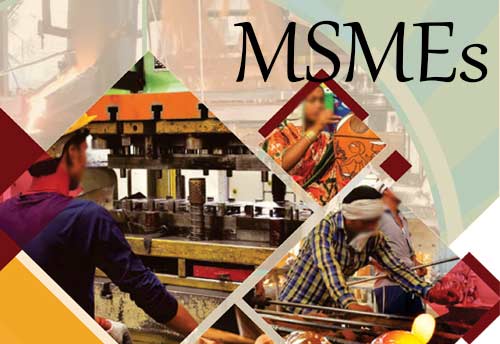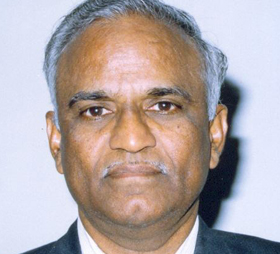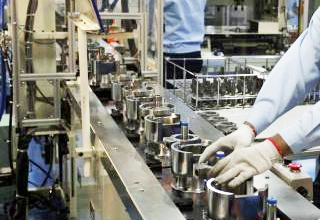Opinion: MSME vision falls short of reality
Updated: Feb 22, 2022

Opinion: MSME vision falls short of reality
By B Yerram Raju
-- The Draft National MSME Policy, targeting V-shaped recovery after the Covid pandemic and the $5-trillion economy by 2025 (since extended by two years to 2027), seems to have seen the world more than India. There is a virtue in looking at the policies of other countries during the pandemic. However, the policy nowhere mentions the reasons for not adopting some of the policies, particularly employment as one of the criteria for defining the sector, when we say from rooftops that MSMEs are employment-intensive.
The virtue of the document is the Vision: “Stimulate efficiency and productivity of MSME sector to generate income, employment and become part of domestic and global value chains taking into account structural transformation, competitive edge, demographic dividend, and regional balance.” The objectives highlight building an eco-system for the growth of the sector, sensitising stakeholders, creating physical infrastructure and linkages amenable to MSMEs, developing a framework for accessible and affordable technology upgradation, and an appropriate institutional mechanism
Historical Data!
It wants to develop a platform to create an integrated database under a uniform format. It nowhere mentions that a census of the sector will be taken. Its data for the present is historical – a mess-up of manufacturing and services. 63.9 million enterprises and 111 million employment are figures of 2015. Where could one find the six crore units while one finds only 70 lakh on the Udyam portal? According to the NSSO data (73rd round), 14 States account for 88% of the MSMEs. While 98% are micro-enterprises, only 11-12% are in the reckoning for manufacturing.
We must have a periodical census of the MSMEs that spread across several sectors – agriculture, KVIC, artisans, rural development, technology, food processing — as none is aware of the mortality of enterprises. A study of 1,079 units of Sidbi in the wake of the pandemic revealed that 63% of units are closed and 67% lost 50% revenues. ISID (Bengaluru) found out only 16% of micro manufacturing units (as defined in July 2020) are functional. The mortality of units is not captured in any reliable data frame. This will be possible only when a census is taken periodically.
It has extensively given the facilitation to the SMEs in several countries but mentioned only 6 States’ policy innovations in Annexure-IV that represent 28% of MSMEs in India (NSSO). It is good to see the extensive reference to the Prabhat Kumar Committee (2017) to which no reference has been made during the last five years and very useful inputs have found a place in the draft. Widening the Tool Room set-up is a welcome policy intervention.
Legal Reform
As the MSME Development Act (2006) has dealt with the MSEs, an important subject of the Act, disproportionately, a separate law should be enacted and while so doing, redefine the sector in terms of the twin criteria of employment and turnover as investment by them will not cross Rs 5 crore. This would facilitate scaling up as well.
Existing EPF is hardly adequate to take care of eventualities as we noticed in the pandemic. Like in the farm sector, all such enterprises should be covered with specific insurance for employees. This would also enable data on employment more dependable for synchronisation of other benefits to the sector.
Definition
The consequence of the revised definition on the twin criteria of investment and turnover has been dealt with but failed to emphasise its effect on the manufacturing sector. Till date, many do not know whether it is retrospective, if so from which date and if not, from which prospective date it is applicable. While we welcomed the change in July 2020, six months after the first Covid attack, micro enterprises in the pre-July 2020 period were virtually the most hit.
Relief Measures
Banks did not extend the Atma Nirbhar Bharat Abhiyan scheme -1 covering moratorium and 20% increase in working capital to the micro manufacturing enterprises. Among the small, those who had collateral securities and the medium enterprises or mid-corporate enterprises were extended the benefits, according to a few sample surveys conducted by RBI (they did not reach out to the micro), Sidbi, ILO, Skoch, IMT, etc.
A sample study of 1,079 units in the country over the effect of Covid-19 that Sidbi presented should unnerve the economy: 67% of the MSMEs are half-shut, and 63% closed. Where did the money spent under Atma Nirbhar Bharat to the extent of more than Rs 3 lakh crore go?
Facilitation, Promotion Councils
The objective of the facilitation council – resolving delayed payments of MSEs – has been side-tracked and the policy contours expected from the States has been expanded to converting them into promotion/development councils in coordination with the National MSME Promotion Council. They should have first targeted strengthening the MSEFCs, as they are quasi-judicial, and then considered establishment of MSME Promotion Councils with specific institutional framework and objectives of functioning.
Funds and their utilisation
No evaluation of various funds and Fund of Funds released during 2020-22 through Sidbi and SBI has found a place, either for continuance, modification or enhancement. Which sector has benefited the most? And what further steps are needed to get effective returns on such investments and incentives? Answers are needed to these questions.
Budget Utilisation
Of the Rs 7,572.20 crore earmarked for the MSME Ministry in the Budget 2020-21, Rs 5,647.50 crore was spent across various schemes while the remaining 25% or around Rs 1,924.7 crore was left unspent. In comparison, 99.39% of the allocated Rs 6,552.61 crore during 2018-19 and 95.81% of the Rs 7,011.29 crore allocated during 2019-20 were spent with only less than 1% and 4% of underspending respectively, said the MSME Minister in the Lok Sabha.
Equity should flow to the sector from the Fund of Funds at the lowest cost to the MSEs. Following suggestions of the Prabhat Kumar Committee, meeting a part of listing expenses for small enterprises scaling up to medium or for raising equity in the stock exchanges, establishment of SME Equity Fund, modifications to the rating scheme specific to manufacturing MSEs, and creating a separate fund for Revival and Restructuring through a separate Industrial Health Clinic like in Telangana need incorporation in the policy.
State-specific Brand Equity Fund from Fund of Funds should be set up by Sidbi on the following norms:
-- All SMEs can co-brand with this if they have ISO certification or any other globally accepted certification standard.
-- Share in the equity would be dispensed by the State government through a specially constituted committee in proportion to the size of the business.
-- Misuse or abuse of the Brand would entail heavy penalties including criminal prosecution where warranted.
The Market Development Fund currently in operation has not reached many units in the small-scale sector. This fund should be accessed by the State government and dispensed through the same expert committee constituted for the Brand Equity Fund. Like the Trade Development Board of Singapore, this MDF should be made available for those SSI units co-branding and joining for large tenders of other State governments or any global contracts as a loan for matured tenders and as subsidy for unmatured tenders.
DISCLAIMER: The author is an economist and risk management specialist. Views are personal.








 Loading...
Loading...





COMMENTS
Be first to give your comments.